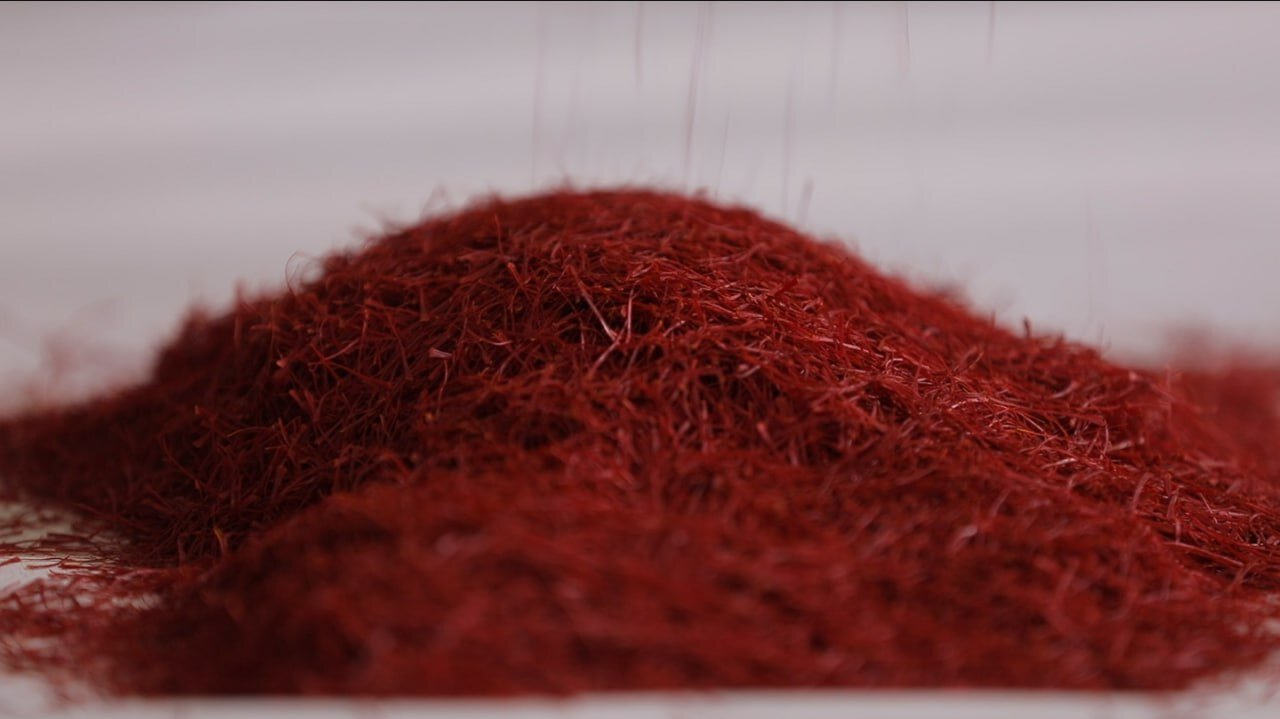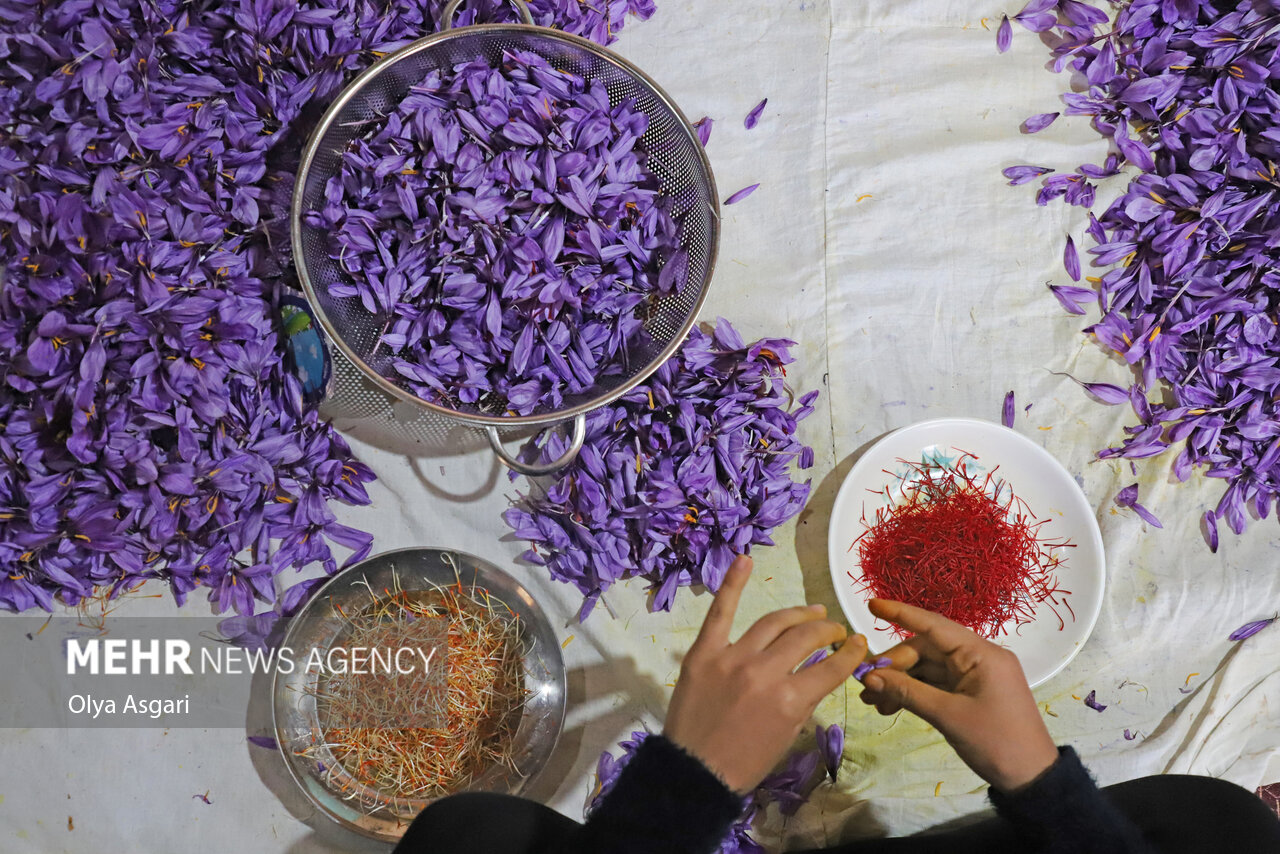Iran saffron harvest unique agritourism opportunity

Saffron is known for various titles such as the flower of health, king of spices, and red gold.
Widely consumed in Persian cuisine for its distinct aroma, color, and taste, the Iranian-made “red-gold” is exported to 65 countries, says the vice president of the Association of Saffron Producers and Exporters of South Khorasan.
“Iran is the producer of the best and highest-quality saffron in the world,” Ali Hosseini said, adding that the cultivation of saffron in Iran dates back over 3,000 years.
The city of Torbat-e Heydariyeh, in Iran’s Khorasan Razavi is considered the capital of saffron in the world.
Besides Khorasan Razavi, North Khorasan, South Khorasan provinces – the main hub of saffron production in Iran – saffron is also cultivated in Chaharmahal-Bakhtiari and Khuzestan.
Well-known Iranian physicians such as Zakaria Raazi, Abu Ali Sina, and Abu Reyhan Birooni used this plant for treating their patients.
Since 2016 the Saffron Farming System based on Qanat irrigation of Gonabad County (Khorasan Razavi Province) in Iran, has been valued by the FAO GIAHS Initiative as one of the world’s Globally Important Agricultural Heritage Systems.
Thanks to the Qanat underground aqueduct, a high-value product such as saffron is produced by local farmers taking advantage of the indigenous knowledge and skills that have been conserved for generations.
Today the Saffron Farming System based on Qanat irrigation plays a key role in creating job opportunities, reducing migration, providing sustainable livelihoods, improving efficiency in water use and productivity, and valuing the conservation of indigenous knowledge and skills for a sustainable future.
By developing its economic activities, the local population is also preserving the beauty of the landscape. Thanks to international recognition from UNESCO and the FAO’s Globally Important Agricultural Heritage Systems initiative, more and more eco-tourists are visiting the region, the Qanat System of Gonabad, and the beautiful colored fields planted with saffron.

Saffron is a magical ingredient in Persian culture, from aromatic foods and colorful desserts to physical and spiritual medicine.
Every year, the saffron harvest season begins in early November which is a golden chance when it comes to agritourism.
While most other vegetation is gone, the bright purple flowers cover the fields and create an outstanding landscape in dry regions in Iran.
Saffron is one of the agricultural products that consume little amount of water so this quality makes it possible for this herb to grow in different regions.
Saffron is a precious herb that is also used in the medical industry. It prevents Alzheimer’s disease and Parkinson’s disease and is used for treating a vast range of diseases like colds, hepatitis, diabetes, and ingestion.
The plant also detoxifies the liver and kidneys, cleanses the blood, heals cuts and bruises, and is a powerful antioxidant. It also includes vitamins B1, B2, B6 and C.
Moreover, it reduces symptoms of depression, anxiety, and other mental disorders. Saffron’s antidepressant properties are related to serotonin metabolism.

Saffron is also used in the food industry as a natural permitted colorant.
Adding saffron foods has an old history. Iranians since ancient times used saffron in making sweets and foods for their celebrations and special occasions.
The value of Iran’s saffron export increased by 52 percent in the first five months of the current Iranian calendar year (March 21-August 22) compared to the same period of time in the previous year, the spokesman of the International Relations and Trade Development Committee of Iran’s House of Industry, Mining and Trade said.
According to Ruhollah Latifi, Iranian saffron farmers exported 81.521 metric tons of the product valued at about $88 million in the mentioned five months, which was also 66 percent more than the figure for the previous year’s same period in terms of weight.
Latifi said Iranian saffron was exported to 47 different countries in the said five months.
China, the UAE, Spain, Qatar, and Afghanistan were the top five destinations for Iranian saffron in the mentioned period.
Germany, the Netherlands, the UK, Belgium, Canada, Bahrain, Hong Kong, Australia, Taiwan, Sweden, Turkey, Malaysia, Switzerland, Russia, Kazakhstan, Vietnam, Mauritius, Singapore, Thailand, Norway, Romania, Japan, Bangladesh, Austria, South Africa, Pakistan, Philippines, New Zealand, Jordan, Indonesia, Croatia, Brazil, Ireland, Denmark, South Korea, Bosnia and Herzegovina and Georgia were also among the importers of Iran’s red gold.
The number of European tourists visiting Saffron farms has increased over the past year, with the entry of Gonabad’s Qanat–Saffron Farming System in the list of Globally Important Agricultural Heritage Systems (GIAHS).
Raviz village in Rafsanjan county, Iran’s southern province of Kerman, hosted its first-ever saffron festival in early November.
Seno village, located 22 km southwest of Gonabad, where over 90% of its people live in red gold features a museum related to saffron.
Reported by Tohid Mahmoudpour
source: en.mehrnews.com





